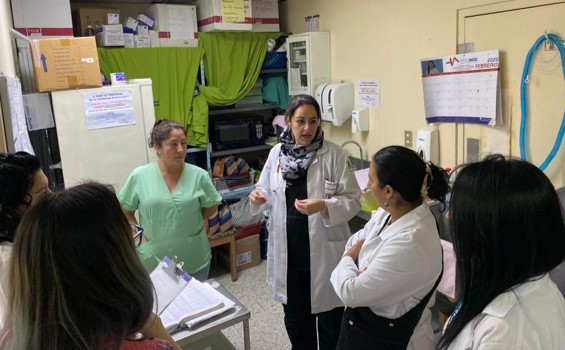

Liver Cancer Study in Guatemala
|
Participating institutions name
and acronyms |
·
INCAP Research Center for the prevention of Chronic Diseases -CIIPEC- ·
Institute of Nutrition of Central América and
Panamá -INCAP- ·
Division of Epidemiology and Genetics/ National Cancer Institute -NCI- ·
Duke University, School of Engineering ·
INTEGRA Cancer Institute |
|
INCAP/CIIPEC Researchers and/or
collaborators |
CIIPEC/INCAP Manuel Ramírez MD, PhD Fernanda Kroker, PhD Álvaro Rivera, MD, MPH, MBA |
|
Researchers and/or collaborators
from participating institutions |
DCEG/NCI Katherine A.
McGlynn, Ph.D. Christian S. Alvarez, Ph.D. M. Constanza Camargo, Ph.D. Michael Dean, PhD INTEGRA Cancer Institute Eduardo Gharzouzi, MD Duke University Dr. Ashutosh
Chilkito, Ph.D. Dr. Nelson Chao, MD, MBA María Iglesias de Ussel, Ph.D. |
|
Background
|
Liver cancer is the
second leading cause of death worldwide, and in particular its dominant
histological type, hepatocellular carcinoma (HCC), is one of the main
contributors to the global burden of cancer. However, this type of cancer has
been undergoing an epidemiological transition since the beginning of the 21st
century. Some important risk factors such as hepatitis B virus (HBV) and
hepatitis C virus (HCV) are decreasing in prevalence at the same time that
HCC incidence rates are increasing in many countries. Understanding what risk
factors are driving HCC not associated with HBV or HCV in this new era will
be important to face the challenge of increasing incidence and mortality
rates.
Northern Central
America, one of the three regions in the world with the highest HCC rates,
appears to be dominated by non-viral HCC, unlike other regions with high HCC
rates in Asia and Africa.Northern Central America offers a unique opportunity
to begin to obtain clues in the etiology of this cancer; given that the epidemiological
profile indicates that HCC cases not associated with HBV or HCV are
increasing. However, there have been no previous epidemiological
investigations of HCC in the region. To fill this gap, preliminary studies
have been carried out by our research group in Guatemala since 2016; and
several interesting hypotheses have been put forward. For example,
high rates of metabolic disorders (obesity, diabetes, fatty liver disease)
and elevated levels of aflatoxins are emerging as important factors. However,
we speculate that these factors alone are unlikely to drive the incidence of
HCC as high as it occurs in the region. Other factors, including other
mycotoxin exposures, Helicobacter pylori (H. pylori), exposure to
microcystins, use of herbal medications, and exposure to pesticides, may also
play an important role in contributing to increased risk. |
|
General objective |
The primary
objective of this study is to identify environmental risk factors for HCC in
Guatemala such as exposure to mycotoxins, history of H. pylori, use of herbal
supplements, water contaminated with microcystins, aflatoxins, fatty liver
disease, exposure to pesticides, alcohol consumption and tobacco use. A
secondary objective of this study is to validate new technologies that allow
early detection of HCC. |
|
Methodology |
To examine these and
other hypotheses, it is proposed to carry out an HCC case-control study of
500 cases and 1000 controls paired by frequency of age and sex. All
participants will be users of the national public health system of the
Ministry of Public Health and Social Assistance and will be residents of the
department of Guatemala and 4 other surrounding departments. The study will
provide an opportunity to compare cases with controls. In addition, we will
conduct a sub-study to compare controls with and without fatty liver disease.
Finally, we will validate a new screening technology among a subgroup of
cases and controls. We anticipate that this study will increase our
understanding of the etiology of HCC. This knowledge can be useful not only
for the Central American region whose HCC rate is high, but also for many
other regions. Our findings may be of particular relevance to the U.S., where
Hispanics are the largest minority group, have the highest prevalence of
fatty liver disease, and this group is projected to have the highest
incidence of HCC in the country in the next decade. |
|
Study
duration |
3.5 years |
|
Status |
Currently Recruiting |
















